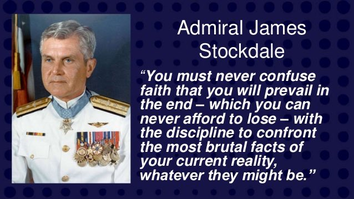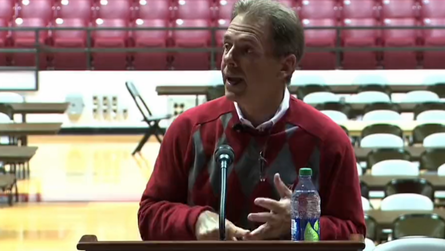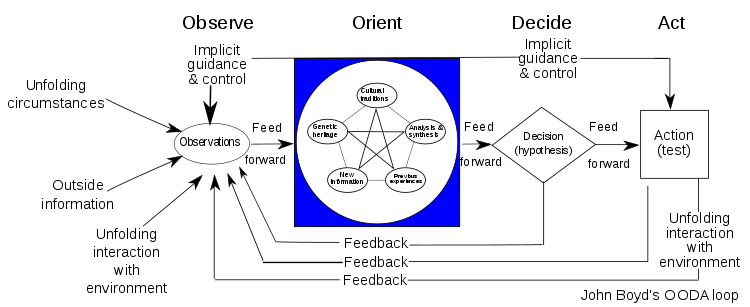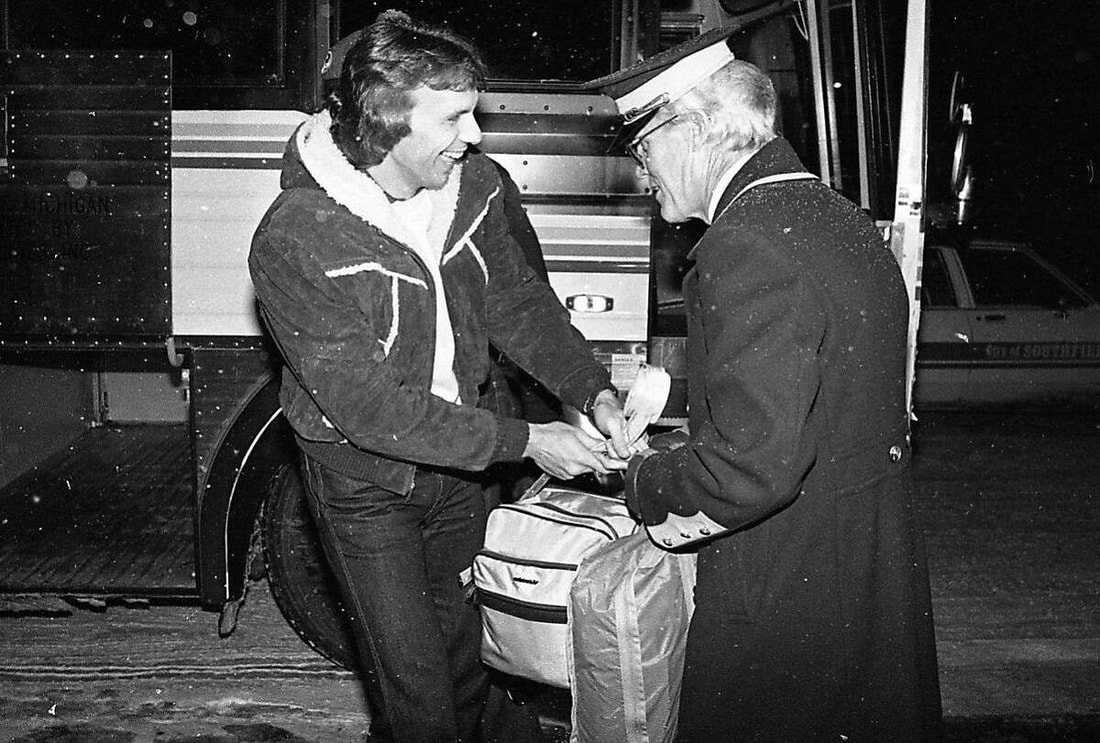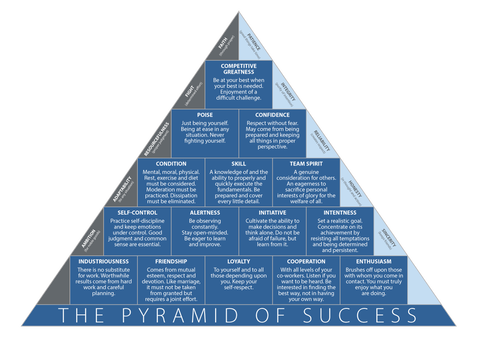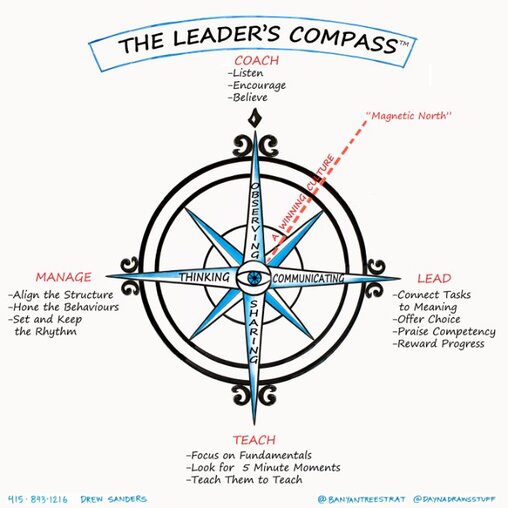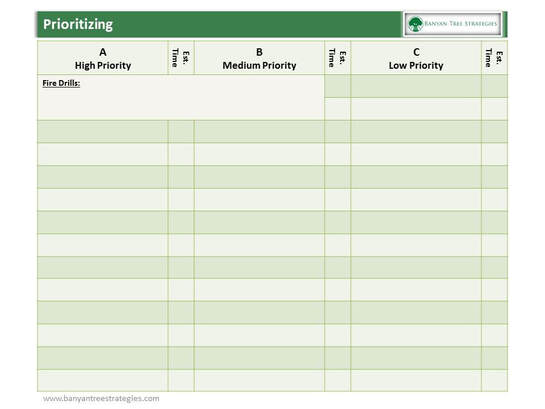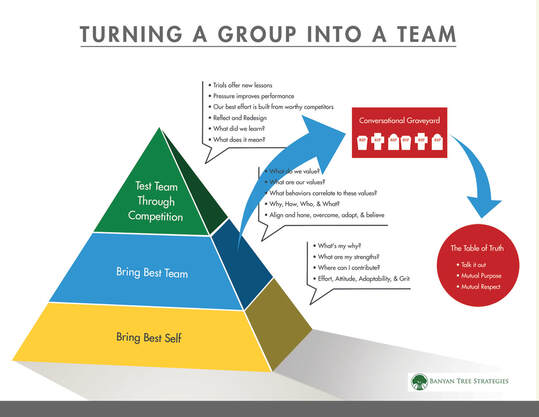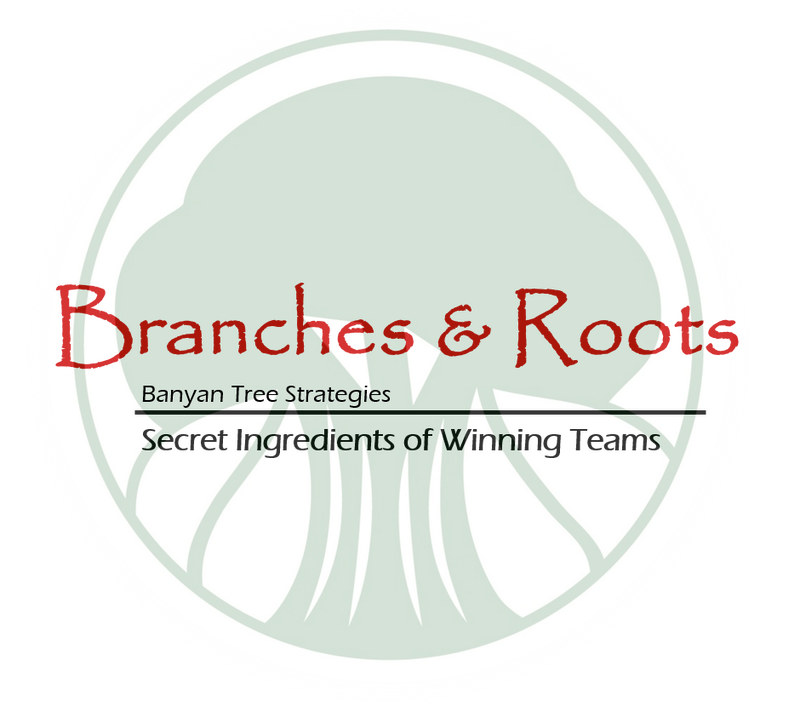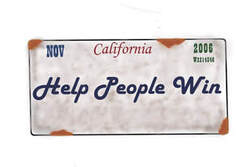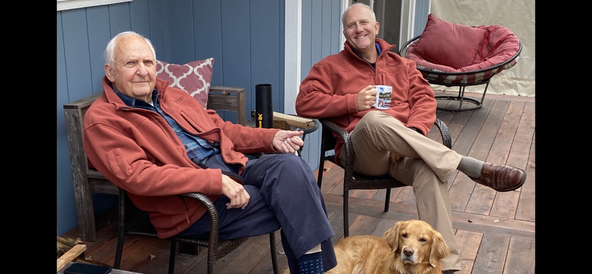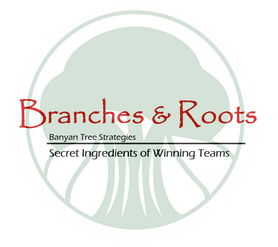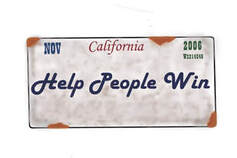 While crafting our vision for 2024 we have been called back to the mental discipline of a United States Medal of Honor recipient. Carrier Air Group Commander Jim Stockdale’s plane was crash landing over North Vietnam in 1965. He was 40 years old and knew his age and rank would be held against him and in the 30 seconds that he parachuted down from his aircraft and into the middle of an angry North Vietnamese village he estimated he would spend the next 5 years of his life as a prisoner. The torture Stockdale and his fellow captives endured was inhuman and led to the creation of the Stockdale paradox he penned upon being freed after 8 years. Whilst sequestered in our home in April of 2020 we published an article about what we could all learn from the Stockdale paradox and the principles of endurance and persistence. Looking at the 4-year anniversary of that experience in the face we think it rings as true today as it did then. We wondered then and still wonder today if the pandemic is really a 5 to 7-year calamity. All the major institutions like the federal reserves and the federal governments made decisions that while having certain short run impacts created medium term consequences. It has been a turbulent time for business owners and their employees. As we turn towards year 4 post covid the Stockdale paradox would advise us to not think about a terminus date like 2025 or 2027 but rather to be convinced of our ability to survive and make living at this time the defining moment in our careers and all the while stick to our daily basics. What are the basics? We wrote a book about the basics called “The Next Gen Almanac” in 2016 and will be highlighting the essentials in our 2024 editions of Branches & Roots. We created a quick diagnostic for the key areas of your life so you can easily handle what life throws at you and keep adapting and moving forward. Here are the categories.
Look for some fun announcements in this area in 2024 as the new AI tools continue to allow all of us to productize our offerings in new and hopefully impactful ways. Thank you for your readership and friendship in this our 10th year as a company, let’s put the pedal to the floor together in 2024! Drew & Sara
0 Comments
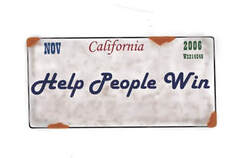 “It’s time to start setting some goals” he bellowed… This wasn’t a meeting for work, this was in the middle of sprint workout at the local masters swim practice. It was a Wednesday and after a warm up we had gone 8 25’s fast and then were doing a 200 recovery and the coach leaned in and said, “it’s time to start thinking about your goal times for the 3 sprint 50’s we are doing next”. Sprinting a 25 is 13 to 15 seconds of pain, a 50 all out is double that plus a few seconds. 30 seconds of pain lingers…3 of them starts to make your extremities feel like they are laced with cement. But there he was, that nice coach who shows up each day to help you take that harder tack into the wind of indifference which is your exercise effort, only this time he was leaning in a bit. “So what’s it going to be Drew?” 30 or 31? I was thinking 32 sounded nice especially because at the end of the 50's sprinting was an all out 100 which was double your 50 time plus 4 seconds. Your fellow swimmers in the lanes around you are also dancing with their best self at that moment and while the inclination to hedge slower is normal, a zest for the moment took over and we all took the lower range for our 50’s. The times are called out by the coaches for all to hear as we come flying in to the resolute wall and pop up for air, (you don’t breathe the last 10 yards of a sprint which hurts a lot). The coaches are paying attention to every second and encouraging you all the way. The last 50 stings but it is a “last one, fast one mentality” and you get 150 yards to recover so suck it up buttercup and go for it. With most of the workout behind you and only a minute or so of pain left the b.s. starts to fly between the coaches and the swimmers. We have fully bought into this pain train and we all pick the lowest choice possible for our 100 Sprint. Now to battle with the water and our burning lungs. There is no all out 100 relative to a 25, there is some pace to it, but not much. You are right on the verge of collapse from the second wall and the final 25 is a conversation that you would not want your mother present. “1:04 Drew, great job, way to go!” My head is spinning, chest is pounding and the pool feels like it is a 100 degrees, but I am the gladiator who is standing over the dead tiger sword raised high. “Are you not entertained!!” Floating on our backs, we warm down for 50 yards and then get out and thank the coaches for their help in creating this pact of climbing the hard fun hill together. Within minutes the pool returns to its restful state, completely indifferent to the role it played in our quest or the outcomes we sought. Was this effort worth it? I have no idea, the feedback loops sometimes are too long, and yet mentally we know this dance helped us all. Turning to your thoughts for 2024, how are you going to rig the game of life or work to be around those people both in and out of your pool who help you “set some goals” and then have as much fun as possible going all out to achieve them? 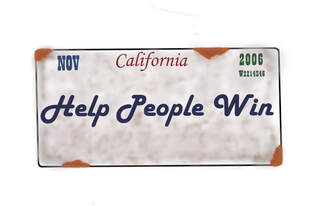 The fall of 2023 appears to be a time where many of our clients past partnerships are slowing down and yet the growth machine must still eat. What to do? Seems like a good time to whiteboard a few new channels that could be receptive to your value add service. Why do channels matter? In our experience it can have a lot to do with the first 5 minutes. Two options here: Cold reach out - "Hi, we would like to interrupt your day and help you understand why we can make your life better with our product or service" Channel reach out - "Hi, we have been vetted and approved by (insert association or company) to help make your life better with our product or service." Both are interruptions but the return on effort for your customer acquisition team can be massively different. Running an effective Channel Partnership (CP) is a different matter but we wanted to share that now is the right time to be in the market place talking to potential CP's as everyone is scrambling to find growth amidst our higher for longer interest rate environment. Which begs the hard question - "What is your plan to thrive and survive for the next three years with these headwinds?" Seems like it's time to stow the jib and start taking out the smaller sails to efficiently tack and adapt. We are happy to help with the brainstorming. 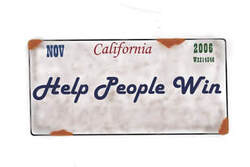 Organizations are still processing the rapid increase in their cost of capital which has served as a whiplash to people and their teams. When your cash is paying you 4%, you look at ideas for progress and growth through a different lens, it takes more rigor. When your floating debt is going from 2% to 7% or higher you start shedding weight in a hurry. This rigor and shedding can lead to job cuts, real estate being foreclosed, and long-standing relationships being put through the fire of an RFP. All of this has made for a choppy and dislocated 2023 for company leaders. We think the economic turmoil is going to continue well into 2024 and with that in mind offer up a lesson we have noticed in sport that might help you have a hard conversation more easily at work. We are calling it our final element because the main feedback we received on our Essential Elements of Winning Teams was that we were missing the benefits of shared suffering. It was in the research of shared suffering that we noticed another nuance for the leader, their players understood the many layers of their vocal tone better and this became a competitive advantage. The 2023 England Women’s World Cup Team Sarina Wiegman is Dutch born coach for the English National team that is playing Spain in the World Cup Final this Sunday. A recent article in the Wall Street Journal highlighted that she has been the secret ingredient to England’s recent success. The article also traces the formation of her coaching philosophy to University of North Carolina Coaching great Anson Dorrance and his focus on having every practice be a “competitive cauldron”. Another quote from Dorrance could be taken the wrong way. “Every practice, for me, is a fight.” A fight, is this the NFL PreSeason? Cue the annual clips of the offensive and defensive lines hitting each other in the head with bare hands while wearing helmets… Is Anson suggesting that the players are fighting against their best selves? As Joe Ehrmann outlines in his best-selling book InsideOut Coaching competition means to strive with others. As you are striving there is skirmishing and fighting and watching the Women’s world cup it is clear the ball is under duress and the players are fighting for possession. Now take this same coach and listen to him talk about his secret ingredient to winning at the time 22 out 24 NCAA championship finals games. The competitive fighter goes to great lengths to articulate in writing to each player how much he admires them and appreciates how much they care for the team and each other. Grab some tissues, it will make you cry, he cares that much. Coach Dorrance appears to have mastered the art of creating a competitive cauldron that the best players seek out. They are willing to withstand the physical and mental heat to pursue their best collective selves. Then as the season culminates, he is able to call upon that commitment and effort and honor it which galvanizes the players to each other in that championship moment. The viewing public shows up for the championship with the eyes of an expert and yet may miss all the subtle cues that the players are sharing with each other as they resonate around solving what the other team is presenting. The coach is also deeply engaged in adapting to the championship moment and has in their arsenal all the emotional tools as rock solid trust has been established. Coach Wiegman is in that moment right now. The championship game is days away and while she may not be writing letters, our bet is she is memorializing in some way the journey and the sacrifice the players and their families have made together. We can’t wait to watch the final. Nick Saban Continues to Get it Right – The high achievers and the mediocre players don't get along. Coach Saban has the trophies, but he also has the tone. Listen to this short clip and then read this article. He is pragmatic and persistent. It is almost like listening to John Wooden. Coach Saban is creating an environment for his high achievers to outlast and outplay the mediocre players and he establishes that in spring practice. There is an important nuance to creating these highly competitive environments that many coaches miss. It is the tone that accompanies the message. The wrong coaches laugh and mock the losers, which kills the majority of the athletes drive to go all in. The right coaches honor the commitment and effort which allows those not on the bus to understand why they weren’t selected and hopefully choose to reapply their talents elsewhere or recommit to that effort.
We wrote a white paper for coaches to hand to players being cut from a selective team which is here. Getting Cut Updated Feb 2023.pdf It comes down to the leaders’ voice which is hauntingly outlined in this video by Dr. Jim Loehr who has been a leader in the coach development field for decades. Like it or not, we carry around the voices from our parents and past coaches and leaders and without work, you may not like which voices come out at the hard moments. Dr. Loehr suggests we work on our stories. When is the Right Time to have a Hard Conversation? Our long-time readers and clients will know this call and response and answer “Now would be fine”, and yet if you haven’t worked on your tone and established a cadence for keeping each other accountable, when the challenges show up, your people might leave you. We hope these stories empower you to lead your team up the hard fun hill this fall and into 2024 as we continue to navigate difficult economic times and if you need any help crafting a vision or implementing one, please let us know. Thank you for your readership and friendship,  The first four months of 2023 has been a blend of let's go, what's that, and oh no! Let's Go! Three years into the pandemic the working and active world is looking to kick it into high gear and go. Unfortunately we can't shed the inflation bug that appears to be harder to kill than COVID. Our monetary policy guru's are using blunt force instruments all in the name of the greater good and it has never paid to fight the fed. Regardless, all the companies we work with are like a pack of Alaskan Sled Dogs after a full night's rest. What's That? OpenAi's ChatGPT releases have been hard to ignore. The first question we asked ChatGPT was what makes a good team? In seconds a very delightful 7 point answer arrived. Further study has revealed that creative and curious people who previously could not code software. Will soon be able to work with apps like the ones we have on our phones to become more creative and productive in their own areas of expertise. Tasks or opportunities that used to not be worth the effort will now be possible. Old competitive advantages will be weakened and at the same time new opportunities will emerge. We are staying curious and listening. Oh No! Rest in Peace Silicon Valley Bank and First Republic. While the financial media writes your obituaries with a disturbing indifference and an air of superiority like they knew this was inevitable, these two enterprises were solid corporate citizens of their communities. They were a part of the solution for their customer base and had best in class employees. They will be missed and are examples of how a standard business practice that works with one Fed policy can become fatal when the Fed pivots. One lesson we have all learned is that Banks lend out their customers deposits and brokerage firms buy securities in your name and act as a custodian. Never more has that difference been in such stark relief. Enterprise Sales & Marketing Observation If things are slowing down now for the sales team it might be because the buyers that were going to make decisions in your category in 2023 have now worked through their processes and you have either won or lost. Larger decisions often require committees to meet and we have noticed that between now and Labor Day someone is always on vacation. Here are a few key actions that appear relevant now.
When your team applies these actions at this point in the year they will have plenty to do while the summer lull appears. Close-Knit Teams - Soft Release We have posted our latest white paper, "The NINE Essential Elements of a Close-Knit Team" on our website. It is our free resource for anyone who is looking to build the type of work or sports team where people actually want to go to the reunion! If you get a chance to review it or engage with our ideas in any way we would love your feedback. Hopefully it allows you and those you know the best chance of collaborating with others successfully. Thank you for your readership and your friendship, 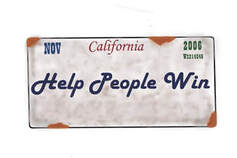 Jason Gay of the Wall Street Journal can wield the pen. As a writer we rejoice in how he holds the reader’s attention in a format that has been losing market share to other forms of communication, namely video and dare we say it…Podcasts. It is not a coincidence that we highlight Gay’s recent article about Jalen Hurts on the 10th anniversary of starting Banyan Tree Strategies. Gay highlights the quarterback's resolve, professionalism and character after leading the Philadelphia Eagles to the very edge of Super Bowl glory. Hurts was climbing what we call the hard fun hill, he collaborated with others on a quest, he took on the yoke of leadership, he made the sacrifices, and failed. Or did he? That is not how Hurts describes it. He said that he either wins or learns. Wait, isn’t that just a platitude, something managers put on the wall that everyone snickers at as they pass by? This guy loses on one of the largest stages and has the courage to say: “I never lose, I win or learn.” Talk about mind control. He also went on to say something we have seen time and time again on close knit teams but that most people think is a myth. We have spent the last 10 years helping companies, nonprofits and sports teams debunk the myth that character doesn’t matter, but the myth persists. When asked why he apologized to his teammates Hurts responded: “I don’t do this to be loved. I don’t do this to be hated. I don’t do this to seek anyone else’s approval. I do it for the guys in the locker room. I do it for all the time we’ve invested into this.” Boom, mic drop, see you at OTA’s and practice hard NFL, the Eagles will be back. If you don’t think every single player wants to rally around that kind of leader you are crazy. In a salary cap world with billionaires throwing around millions of dollars Jalen Hurts’ character is one of few sustainable competitive advantages a team could have. The myth is that character doesn’t matter, it is about the money, and the more money you spend the better the players you get, and players make plays. But that only gets you to the quarter finals. Winning the title takes and demands character. The key to this riddle is that character is contagious but is only maintained by stacking consistent actions on top of meaningful shared experiences on a daily basis. Developing these systems and working with people like Jalen Hurts for the last 10 years has been inspiring. Will Jalen Hurts be a good husband, father, or friend? We don’t know but a final quote from him gives us a window into the answer. When asked about winning or learning he offered this response: “The beautiful part about it is everyone experiences different pains; everyone experiences different agonies of life. You decide if you want to learn from it. You decide if you want that to be a teachable moment. I know I do.” At 52 and 50 years old and 30 years into working in professional services we can really relate to the ups and downs of providing for a family while helping others. Banyan was born out of the challenges of ageing industries being disrupted by technology. Ask any doctor if they are making more than they were 10 years ago and they may do more than chuckle in your face. The gross margin for the financial advisor, insurance broker, or CPA has been plummeting. We formed Banyan to get closer to the client and cut out the middleman. In the last 10 years we have helped 40 different companies solve problems in the areas of strategy, execution, and building a culture where character counts. Every business, every idea faces the challenges outlined in Schumpeter’s law of creative destruction. There have been plenty of wins, but there has also been a lot of what Jalen Hurts calls learning. Looking ahead to 2023 we are going to celebrate our 10th year by using our eight newsletters to recall the top projects and solutions we were fortunate enough to work on with clients in the hopes that it will help others. We aim to publish a long format white paper on the “Nine Essential Elements of Close-Knit Teams” that we wrote about in our newsletters last year. Finally, we have been circulating an advent meditation privately over the last five years, and after some encouragement will be looking to turn it into a small book called “O Holy Night” that we will release this November. Our aim in the next 10 years is to help you create the sustainable competitive advantage that comes from being a leader of character no matter the setting. Most of our industries are just as competitive as the NFL, which means developing character will count. We close by republishing a poem written in January of 2015 as we rallied the troops to climb our collective hard fun hill. We hope you enjoy it and thanks as always for your readership and friendship. “No hill for a climber!” There Is Something There is something awesome about standing at the base of a mountain. A 365 day climb. The question before you is which route shall you take? Is there a new path to consider? There is something refreshing about standing at the base of a mountain. A chance to do it just a bit better this year The question before you is what will you stop doing? A curious mindset could help. There is something risky about standing at the base of a mountain. Past climbs have taken a toll. The question before you is will you let past risks scare or hone. Now is a time for going. There is something unknown about standing at the base of a mountain. Adventures abound at each fork. The question before you is will you revel in that moment? Seek those who have zeal. There is something honorable about standing at the base of a mountain. Your gifts were given. The question before you is how will you share them for the benefit of all? It is time to climb. 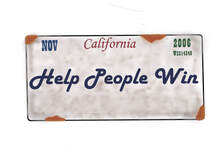 We wrap up our series on the Essential Elements of Close-knit Teams by looking at the power of ceremony and ritual to cement the bonds that can last a lifetime. How you say hello and how you say goodbye have been proven to make a lasting impact, and with a work or sports team it matters even more. The buzz of doing it right feels great and the sting of doing it poorly can last a lifetime. Saying Hello We began the year by highlighting Owen Eastwood's work on how to bring people from widely different cultures together. His book “Belonging” drives home how important it is to have ceremony at the beginning of a season or when a new person is added. Instead of the new person being the "low-man" or paying a new person tax, they are welcomed as an important member of the community. Getting off to a Good Start As the leader of the team, you are weaving several different common threads together each year. You make sure that everyone can connect to the aligned vision, understand their role, and feel at home. You also give them room to push themselves and have a major say in how they are going to pursue their best self. Finally, you equip them to take that best self and combine it with others to make a collective effort that can compete at the highest level possible. The best players usually want to get better and love to work with and for people who help them improve. As you allocate the time between culture, effort, and skill you are weaving a collective rope that bonds everyone involved with the mission together. How do you Build a Flywheel that Sustains the Right Culture? The leader seeks to create a safe place first and then should facilitate a discussion on what matters most and how the team will take the key actions towards the agreed upon goal. Reid Hoffman wrote about the way they scaled LinkedIn in his book “The Alliance” amidst the challenges of a Silicon Valley work culture which was talented but prone to job hopping which undermined their mission. One way to connect people to a common vision is to give them a say in what the values of the team are. We have adapted the alignment and value process they used into a “Groups2Teams” process that can take between 1 and 2 hours. When a leader facilitates this process, the team ends up owning the values because they chose them. Jack Clark, the head coach for Men's Rugby at Cal has taken this to the next level by attaching a question that each member can ask themselves to hold them to the standard of that value. We call this a dynamic question because it activates the value and helps your team self regulate whether they are a unit of 10, 1,000 or even 100,000 people. Here are a series of videos Jack did with some other coaches at the What Drives Winning Coaches Symposium. Once a team has a common way they will act it becomes much easier for leaders from within the organization to emerge. These leaders will embody the values on their path to accomplishing the stated goals. The correlation between action and success only emboldens the culture. The leaders are often called captains and the coach that can empower captains has a major competitive advantage. Captains take recruits on their campus visits. Captains recruit people from other companies to join the team. Captains drive the herd to cull the wrong behaviors that can sabotage a team’s success. Captains drive and build culture and over time as they age out or move up in a work environment, they are a major part of the organization's stored value or flywheel of culture. Saying Goodbye and Building out the Alumni Network Hoffman also addresses the reality of people leaving your organization and takes a page from the university system by calling it an alumni network. This connection may seem like a stretch at first because many people leave a company on different terms than they left or graduated from their school. However, alumni fit the goal that the company should have, which is to honor those that move on in such a way that they might be a good resource for future employees. In a sports team context, the end of a season marks the dissolving of a class or year and should not be missed regardless of the outcomes on the field. Championship teams can pass around hardware like trophies or rings but just as important is how the players grew individually and collectively. The armed forces sports teams are seldom national champions and yet after their tours of duty are finished every potential employer knows the values those players will bring to the interview or job. Over time different teams or companies will build out a competitive advantage in recruiting because the alumni network will help the leaders select the right players more often. Bo Schembechler was the head football coach at Michigan and had a great line about recruiting. “If you miss the right guy and he goes across the street, he might beat you once a year, but if you take the wrong guy, he ends up beating you every day in practice.” Your alumni network should understand what your “our kinda guys” or OKG is. With more nodes of intelligence out there the leaders have a better chance of digging down to the softer skills like heart or drive that can be missing on a video or a resume. All these benefits are part of the reason it is so important to memorialize the commitment made, the relationships built, and the shared memories that were experienced at the end of a season. Companies can do this on a calendar basis with much of the same effect. The cadence of reflecting and honoring the past contributions can be a force multiplier as you move forward and seek to improve in the future. In your organization regardless of your station we hope these elements are ones you can adopt to facilitate the creation of a closer-knit unit as you seek to be a force multiplier for good. Thank you for your readership and friendship this year. 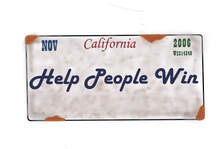 Our final two postings on the Essential Elements of winning teams are about championship adaptability and using ceremony to create a flywheel of sustainable energy for winning the right way. In previous posts we have looked at a variety of factors that a leader can work with to help the team trust each other, go all out, use failure as a constraint to get better, and be all in. All of it connects to the hope of a championship victory which in most cases will not be handed to you, rather you will face a worthy adversary who be equally talented and similarly committed, and you will have to emerge victorious. How do you avoid being what John Madden famously said about the NFL, which is there is one winner and everyone else is a loser and the team that lost the super bowl is the first loser. The words may sting but ask Marv Levy who coached the Buffalo Bills to four Super Bowls and lost them all. Ask anyone who was told they finished 2nd in the big RFP and you will get the same answer, you get to the championship to win it! Adapt! The massive distance between finishing first and second helps create the tension that makes for good theater. No one watches the NFL Pro-Bowl (it has recently been dissolved) because nobody cares about the outcome. Part of the intrigue in a tightly contested game is how the best act and react to each other as things unfold. Both the New England Patriots and the Golden State Warriors are famous for their half time adjustments and 3rd quarter success. In previous posts we have looked at how John Wooden would not stalk the sidelines of the game as he needed his players to be adapting and didn’t want to distract them. Basketball is a great example of adaptability because the ball is in play the moment it is scored and put back onto the court. Jay Bilas in his book Toughness outlined the “next play” mentality that Mike K installed at Duke which starts with the mental ability to get over the loss of the basket on defense and the opportunity to gain a basket on the other end. Sport can give us some good examples but inside the military there is a clean framework that is highly transferable and trainable which is what the leader is seeking. OODA Airforce Colonel John Boyd was a world class fighter pilot and changed how our war planes were built in this country. Colonel Boyd also left behind a decision-making framework that is the standard for our military and can be of real use to leaders who are looking to empower their teams with a way to build out championship adaptability. The OODA loop stands for Observe, Orient, Decide, Act and is born out of air-to-air combat training that earned Colonel Boyd the nickname (40 Second Boyd) because he would allow his combatant an advantage position on him and within 40 seconds would be able to kill them. Observe what is causing your discomfort of pain, measure the size and scope and do not hedge the size or seriousness of its power. Orient yourself and your assets to the enemy. How can you adapt given what you have currently within reach? Decide on action to take. Act on that decision. Reflect and run the loop again. Much of the OODA loop training in the military is how to run the loop faster than your enemy, to get inside their OODA loop. Today's climate is perfect for taking that same point of view. Consider running a daily OODA loop for yourself, and family. Run a daily OODA loop for your work team. These simple questions will allow you to get to the brutal truth as quickly as possible which will allow you to adapt. Hopefully you can take this framework and customize it for your situation. Who is your competition? Where are they strong? How are you positioned relative to them in the marketplace? Which factors does a potential customer need to prioritize to pick your offering over others? How can you position the questions that are asked to highlight the factors that help you win?
Whether it is in sport or work you can overlay the OODA loop framework and start to train your team to either take physical or verbal action. As you run this loop you are increasing your team’s chances of victory and getting everyone ready to adapt in the biggest moments. Eight Essential Elements of Close Knit Teams #6 - Team Chemistry & Humor - Do They Matter?11/8/2022  Our final three posts on the Essential Elements of Close Knit Teams focus on team chemistry, championship adaptability, and how ceremony can create a flywheel for building a sustainable and healthy winning culture. Is Team Chemistry Even Real? Team chemistry is seldom described in a clinical or linear fashion, it appears to be etherical vs empirical or can be described by people as a “you know it when you see it” phenomenon. We like to study topics like this and were elated when we stumbled across Joan Ryan’s well researched book “Intangibles,Unlocking the Science and Soul of Team Chemistry.” Joan has covered sports for her entire career and has been at the forefront of women’s leadership in sports journalism, she is a powerful writer, but an easy read. Ryan takes on the validity of team chemistry in the book. Her interviews with crusty professionals like Jeff Kent and Barry Bonds are great examples that she wasn’t just looking for easy answers to the hard question, does team chemistry even matter? You get the sense that the author, who was so close to so many interesting teams based in the San Francisco Bay Area over the last 30 years, noticed that when people gel, unexpected positive outcomes seem to happen with more than random frequency. Digging into the research she compiled to go along with her interviews, we wanted to highlight an article that was published in the International Journal of Sport and Exercise Psychology in May of 2011. A team of five researchers from the University of British Columbia school of Human Kinetics looked at “Informal roles on sport teams.” Their research produced ten labeled roles that we, as humans, are apt to fall into when working with others on a collective task. Their research identified three types that were detrimental to their success. Humm Baby! Ryan had a real supporter in former SF Giants Pitcher and now long time TV broadcaster Mike Krukow, who helped her overlay this research on their 1989 World Series Team known as the Humm Baby Giants. Krukow could name every type on their team and how they managed the different types to collectively get to winning baseball without trying to force everyone to act the same way.  This really resonated with us, because as much as we all appreciate the uniformity of a military drill team and understand how in certain situations the precision and unity of that effort requires nothing but absolute compliance and obedience, there are many situations where that is a recipe for human disaster. The rubber band of personality always seems to find a way to snap back. As leaders and managers of others in family, sport, and work we recognize the importance in identifying and working with your teams’ interests, strengths, and styles. The University of British Columbia’s research coupled with Ryan’s compelling book have been extremely helpful, and we think their findings are a big part of competing at the highest level and enjoying the accompanying challenges. Here are the labels and the corresponding definitions. Why are Bill Walsh’s PE Classes having more fun than mine? Starting last fall we did our own research with players from Super Bowl winning teams, leaders of companies that have gone public, and world class hospital executives and can support Ryan’s findings. However, one interview going back about six years before this book was published stands out. One of our favorite mentors and a world class sports psychologist is Glen Albaugh. Glen lives in Stockton and has lived an amazingly varied and wonderful life. His work with applied psychology goes back to his PHD in sports psychology from the University of Utah in 1971. He has been a long-time friend of Michael Murphy of “Golf in the Kingdom” fame and while a professor at The University of The Pacific taught and remains close to Pete Carroll who coaches the Seattle Seahawks. He also coached high school basketball and was the Men’s Golf coach at UOP while Drew was playing for Cal. Sara and Drew both saw Glen in his capacity as a sport psychologist while we were playing golf professionally and he had a stable of very successful touring professionals who he counseled. Glen wrote “Winning the Game Within” and had an excerpt about Sara in the book. About six years ago after bumping into Glen at dinner he agreed to allow me to interview him over lunch about his life as a coach and youth administrator. We met about 10 times over the years, and I would always record our conversations and then have them transcribed and sent to him. The nuggets from those lunches abound, and yet it was an off handed observation from him that I come back to the most. “Why were Bill Walsh’s PE classes having more fun than mine?” Wait, Bill Walsh was a PE coach? Yes, at Washington High School in Fremont while they were both making ends meet and just getting started. I asked Glen why and he responded because Bill could sense where his class was and then would adapt in an instant the tone and meter of his communication. Walsh the Bellhop Fast forward to the 49ers first Super Bowl in 1982 and with Walsh as head coach he sensed the team’s mood and recognizing they were a little tight donned the bellman’s cap at the hotel and helped the players with their luggage as they got off the bus as a gag. He read the mood, knew his players, and helped take some air out of the room. What a pro. Everyone’s leadership journey is unique, and history may not repeat but it surely rhymes. We hope these insights from others empower you to keep paying attention to the little things that help your group become more like a team and your team become one of those special tight knit units where everyone can’t wait for the next reunion!
Thank you for your readership and your friendship. Drew & Sara Sanders Along with team building and listening to your players, coaches and leaders should seek to create an environment where everyone can learn how to go at game speed both individually and as a unit. A leader needs to have a plan and a correlating structure for going all-out together because power without control can get you off the rails and, in the ditch, quickly. The cauldron of controlled conflict will allow your team to trust each other more as they see that others can match their best and that you can even get the sum of the parts to add up to more when the active ingredients of trust, precision and planned adaptability are inserted into your practices. Your best performers are going to want to push their limits, and you will need hard practices to allow everyone to improve together. As Tom Hanks so perfectly said in his role as the washed-up Jimmy Dugan in “A League of Their Own,” It is the hard that makes it worth it. Why do you need trust? Sports teams give us great examples of this and while the correlations to work are not 100% they are close enough. The team that doesn’t trust each other when under duress will stop sharing the ball and a form of “hero ball” will ensue. Bill Belichick of New England Patriots fame has been known to try and force this on his opposition by taking away one key player from the other side and seeing if the other team can adapt. Adaptability is another key ingredient, but before you can adapt you need to be able to trust each other. In a work context this could come up if a colleague who normally plays a key role leaves your company or is out sick. Who else can step into their shoes and be ready for the big presentation to a prospect or provide an internal report? Our magic formula for building trust is SE=C=T=Success SE stands for Shared Experiences, C stands for window into your Character, and T stands for Trust. Going full speed in practice or in a conference room and being hard on the idea or ball and kind to each other is a fantastic, shared experience. With enough of these shared experiences everyone on the team starts to understand the character and commitment of all involved and this organically builds a trust that is experience born. Why do you need precision? To manage is to think for, with, or through something by yourself or with others. In this situation a good manager is thinking through the process of running an effective all-out practice or meeting where everyone is committed to being hard on the idea or ball while still being respectful of others. The precision comes in the form of the constraints you will put the team in before you release them to perform. In a sales context you could create a scenario where you are up against company B for an RFP and the buyer is saying that they are offering a similar product but for 20% less. What questions should you ask and how should you respond? In a sports context you can create drills where you are giving one side an advantage and then teaching through the constraint to help the players adapt. The best in business and sport identify moments of maximum influence (MOMI’s) and train their teams to be aware of them and how to react and perform with great fundamentals. The prior preparation of the leader is crucial to leveraging the effort that assertive play is asking of your team. Don’t ask them to go 100% if you haven’t prepared for everyone to receive at least that much in return for the effort. Why do you need adaptability? The final triangle in John Wooden’s pyramid of success is Competitive Greatness. "To be at your best when it is needed. Take enjoyment of a difficult challenge." It has been decades since Wooden's UCLA teams dominated college basketball but even then, it was a highly competitive sport with hundreds of great players on different teams all of whom were striving to win the NCAA title. Wooden won nine titles, including seven in a row, and for most of the games would be seated on the bench. This is in stark contrast to his fellow coaches at the time and more obviously in the present. Watch any game on TV and the second a big play is made the camera goes straight to the coach’s reaction, where there is must-see TV as they gyrate and turn into a three-year-old with no filter on their feelings. Wooden was quoted as saying that the work had been done in practice by the coaches and the players and that the job of adapting to the game itself was in the hands of the players. Wooden knew that if his players could not recognize the tactics of the other team and then adapt that he could never call enough time-outs to do it for them. Changing up the practices and altering the way you practice by adding constraints to enhance your team’s adaptability all can build a mental elasticity that will matter in the biggest moments. We created the Leaders Compass years ago and continue to notice that as people lead themselves and others, they are moving on several axes with one of them being the ability to persevere balanced by the need to adapt. On its first day Basketball was more like Indoor Rugby - A great example of adapting.
James Naismith is credited with inventing the game of basketball when faced with an upcoming rainy season in Springfield, Massachusetts. He brought the boys inside and put up a couple of peach baskets on the wall and gave them a soccer ball. He told them that a point was scored when the ball went into the basket. The boys went all out and soon enough the injuries piled up as the boys ran with the ball and tackled each other on the hard gym floor. Regardless, the boys were happy and wanted to keep playing the next day. Naismith used all three principles we have discussed and added some constraints to allow the boys to keep playing and stay healthy enough to play. Rules were assigned (like no running with the ball and no tackling) which took precision and adaptability and trust was given and received by the players and Naismith. Going all out…. that was the easy part as players love to play! 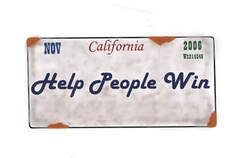 We are finishing up the first half of 2022 with our 4th post on the Eight Essential Elements of a Close Knit Team which appears fitting as we head into the "half time" of the year. Defining what is fair and the differences between leadership and management are crucial for any unit that wants to adapt quickly on their path to this year's championship. Sport and work teams correlate easily and yet the tension that exists around playing time and who has the ball at the end of the game seems to be unique to sport. What is fair, how people lead themselves and how they allow themselves to be directed are foundational issues on a sports team. Understanding how the best teams have dealt with this tension could afford the business leader some transitory insights. Fairness and Roles Warming the bench or getting garbage minutes can really challenge a person’s commitment to putting in the extra effort in practice. The great arbiter of sport is playing time on a team that is competing to win a championship. The coaches control playing time and they need players who are ready to perform their best inside the system they have designed and taught in practice. It is very challenging to create an intense practice environment with players who know they have different amounts of playing time during the game. Sometimes the starters want to take it easy and rest up for the big game and sometimes the back up players aren’t sure the effort is worth it. Why hustle to just watch the game from the bench? The coach has the whistle and can change practice from the fun of scrimmaging to the drudgery of conditioning, but most don’t want to go that well too often. John Wooden, who was voted the coach of the 20th Century by ESPN deployed a tactic and a methodology to address these issues. He communicated individually with each of his players the role he anticipated them playing on the team as early as he could. This declaration was based on what he knew at that time, and he made sure to balance the reality of the present with the possibility of a better future. In business Reid Hoffman and Ben Casnocha wrote “The Alliance” where they introduce the concept of meeting individually every 45 days during an 18-month tour of duty for key employees in an effort to have their best performers feel that the company’s mission and their personal contribution were connected. Importantly the meeting was focused on the employee first and the company second and proved to greatly increase retention rates. In both settings, knowing your role and understanding how that role helps the team succeed goes a long way to maximizing the daily contributions everyone chooses to bring which enables the leaders to build a high-performance team. Wooden’s methodology for fairness is also a piece of timeless treasure that many young coaches and managers fail to implement. Discipline and compliance to small details have become hallmarks of championship lore. Nothing spreads faster than when someone breaks a hard and fast rule of being late to practice or another rule that is in place to keep a large number of people in order. For some reason we all take solace when somebody else gets some time in the penalty box. Zero tolerance can really catch a leader off guard late in the season and potentially having the team distracted at precisely the moment you need them focused on a championship performance. Wooden established early that fairness was not a horizontal line, rather introduced the concept that fairness was earned and deserved based upon past contributions or performances. This subtle change gave him room to have strict rules that enabled buy in by all to prioritize the team above other distractions and yet to not allow small infractions to get in the way of allowing everyone on the team to accomplish the goal of winning the championship. Swen Nater & Ronald Gallimore go into more detail on this methodology in their book “You Haven’t Taught Until They Have Learned.” Swen is a great resource as he was Bill Walton’s back up for three years at UCLA under John Wooden and hardly saw the floor and yet was a first-round draft pick and had a successful 11-year pro career. Defining what is fair and then connecting people to how their role maximizes the contribution they can make to the unit’s success is something a leader should do early and when consistently administered should give everyone the latitude they need to adapt to outside issues that inevitably arise. Leadership and Management Over the last 10 years leadership and management have seen a blending of their definitions and management has been taking it in the teeth with meme after meme declaring the benefits of leadership and the horrors of management. However, when looked at through the lens of competing to win a championship the players and coaches need to work in consensual interdependence and both management and leadership should be clearly defined and differentiated. Understanding and honoring the differences can be a key contributor to the unit’s success. Peter Drucker liked to say that to manage was to think with someone and if necessary to think for someone while they were learning the task. Jack Clark of University of California Rugby fame has a YouTube talk on the differences between leadership and management and how he defines them on his teams. From Clark’s perspective he requires that every player lead themselves and adhere to the values that make up their culture. They accomplish this by having a series of questions they ask themselves and by answering in the affirmative they show their fealty to the unit. Clark further outlines that within the team they need to waste as little time as possible on contextual matters that can be delegated to a small subset of the team, the captains. Everyone on the team consents to being managed and directed by the leaders so they can focus on playing the highly adaptive game of rugby where the coach hardly speaks to the players during the game and only the captains can speak to an official. As an aside, wouldn’t the NBA be a more enjoyable game to watch if they had the same rule? Companies may appear to have some advantages over sports teams when it comes to establishing questions that allow their people to lead themselves, yet we seldom come across them. Identifying your teams most valued values is something you can learn in about two hours with this DIY worksheet. We have found that it really brings people together and allows you a starting point to building out the questions that empower your people to bring their best which is ultimately what they want to do. As a coach or a business leader please consider learning from these dedicated practitioners of unit cohesion. We all know how hard it is to keep it fair and not lose your team’s commitment while you are competing. These greats dealt with the same issues of human nature, and we hope they help you as you are building your best teams in the future. Essential Elements of a Close-Knit Team: When is the Right Time to Have a Hard Conversation?4/7/2022 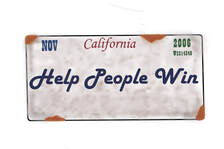 "Now would be fine" is the answer we preach and teach. Of course this is an easy answer for someone who has authority or position power. But what about at the other end of the spectrum? Our experiences suggest the answer is often...."NEVER is just fine by me!" So how do we bridge this gap? It starts with organizing and prioritizing your own schedule and continues in how you share your choices with others. Geoffrey Moore who has successfully advised Marc Benioff at Salesforce and Satya Nadella at Microsoft recently wrote about how the word "priority" entered our language in only the singular form. He is suggesting that the CEO needs to set THE PRIORITY and that the team should either buy in or leave. Talk about a hard conversation. If you are leading a smaller team, like a Jeffrey Bezos "two pizza" team, or in military parlance a sub unit you may have a very clear directive from above, but there is still the challenge of managing the disparate tasks. The team at www.thearmyleader.co.uk have a series of excellent posts about small unit cohesion and execution. The articles are current and written by those who have recently been in active military service. No matter where you sit on the power curve when you organize and prioritize your tasks and share them with your superior you are having a hard conversation with yourself first, this is a habit worth honing. We use the following template as a constraint to develop our planning abilities. DEALING WITH THE "YEAH BUT" Right about now, you, the reader may have already had an internal dialogue that is the mother of all "keep it the same" traps. You said, "yeah but in my case it's different" and you moved on from seriously considering changing or adapting your actions or behaviors. Guess what, your people might be saying that to themselves when YOU are talking! "Yeah But" is what creates the conversational graveyard between people on a team. Inside of tribes all over the world one of the first things leaders do after they control the dress code is they control who talks and what they say.
It is this command and control style that starts and feeds the conversational graveyard that starts to undermine the teams ability to trust each other and effectively execute the leaders plans. In our last post "Stop Saying Stupid Sh*t Outloud" Trevor Mowad described how culture is built or destroyed by words and phrases shared out loud and the 7 to 10x impact of negative language on a team. Three phrases that can help anyone who is challenged by hard conversations. Here are three phrases that low power people can employ to help them engage in having hard conversations early and to help clean out their teams conversational graveyard. "That is interesting, can you say more about that." Say this when a statement is made, like "There is no way, we are going to win that business". The response to your question will typically be the "why" behind the statement. Once you have the why, you can get a window into the logic or emotion that the other person is carrying into that topic. "I hear you." This is another conversational enabler and is often best used when someone is being dramatic or dogmatic in making a point. Conversational graveyards can create a great deal of tension for certain people and then instead of talking things out, they act them out or worse yet, they blurt them out. Your empathetically stated "I hear you" can really land and take the air out of the balloon. Frustrated people sometimes don't need agreement as much as they need to feel heard. "That's the easy part, can we talk about the hard part?" This phrase is a lane changer, or kind of like putting the clutch in so you can shift gears. It is best delivered slowly and then you should pause for a few seconds to let the other side know you are going to bring up something that may not be agreed to yet. Understanding these phrases and then putting them into your conversational tool belt take time and practice. If you are looking to learn more about these topics we have two book recommendations. The first is the gold standard going back decades by the team at Vital Smarts Inc. "Crucial Conversations, Tools for Talking When the Stakes are High" has sold millions of copies over the decades and is still as relevant as ever. A more recent offering from retired FBI negotiator Chris Voss is "Never Split the Difference" and while the title connotates that you will learn negotiating tips, the first thing you learn is a mindset and tool kit for entering into a conversation where the outcome is in doubt and therefore could be unsafe or hard. Regardless of your role as leader or follower we hope that we have enabled you with a few more tools to answer our title's question with a resilient and patient...NOW WOULD BE FINE. 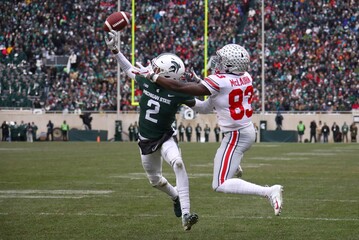 I really love watching football, particularly the passing game where two elite and quick athlete's battle as the quarterback's pass spirals towards them. The TV commentators have recently started using the term "In Phase" to describe when the defensive back is in the correct position while guarding the receiver. A quick google search shows that being In Phase is different depending on the route the receiver is running, but that typically the DB is positioned on the field side hip of the receiver. Enterprise sales professionals are like DB's in that they "cover" accounts on behalf of their company and in an recent situation we broke down their job as really only being in four phases. Enterprise sales is anything but simple with all of the nuances that come with managing the relationship between two very large companies, however the first thing you need your sales professional to recognize is what phase of the sales process are we in currently? Embedded inside the phase recognition is the subtle change that goes on in your conversations with the buyers as you work from being curious about a match to rigorous in your pursuit of aligning the clients priorities with the solution you are providing. If you lose track of the priorities and don't get the buyers to continually reiterate what matters most, you could be setting yourself up for a late stage disappointment. Here is how we have described the four stages of Enterprise Sales (with some humor injected) and how to pay attention to matching the buyers priorities with their companies top initiatives. Team,
As we continue to wage the battle of the new(us) vs the old(the competition) I wanted to outline what I think are maybe some obvious concepts that hopefully keep us fired up and focused as we leap into April. There are really only four phases for our top Enterprise Prospects. They are unaware of our services and therefore are lost in the wilderness of want and despair. They are aware of our services but not engaged in a buying process because other issues are keeping them occupied and so they are losing out on all the $$ we can make them. They are engaged in a buying process with us and most likely others so they are close to seeing the light, but sadly our competitors are out their like Wormtongue in the Lord of the Rings and so we must remain vigilant in our pursuit of truth in the context that our prospect has declared in the discovery call. This is why we get them to prioritize the issues and make sure they remain true to those priorities all the way through the RFP process. They have picked us and are rolling out our solution and are on their way to the promised land or they have been bamboozled by our competition and must suffer for another 3 years in the land of mediocrity. The fun in this is that these poor lost souls think that nothing is going to change the game.....and yet, we have references who were just as lost and are now willing to go on record and tell others that our solution is a "GAME CHANGER." The key is to know how to reveal our solution and to do it in the context of the client's current reality. Our failure to do so can and will lead to other vendors winning with lesser solutions. Thus we must always be willing to be curiously optimistic when speaking with our grumpy buyers early and then as things develop continue to accuse the idea that our solution is the only solution as it is clearly not. The winning solution is the one that matches the priorities that the prospect shared in the discovery call and verifies all the way through the buying process and importantly we need to tie our category to the BIG 3 issues that the prospect is focused on from the CEO on down. Learning how our prospects prioritize our category and then tying it into the BIG 3 is a one two punch that helps us and helps our buyer look good internally which is really what they care about. So like the good and hungry hunters that we all are, let us go into the conversations early with curiosity and finish them with rigor. Fired up to be on your team! Drew  Last month we talked about helping your team feel like they belong through the Māori term Whakapapa. For many of you it resonated but led to the question, it feels great to belong, now how do we win? Belonging and winning….now that is like peanut butter and chocolate! Mental Strength Coach Trevor Mowad worked with the football teams at Georgia and Alabama and job #1 was getting the players to “SSSSO!” This may sound simple enough, but when you are going to build the best college football team in some of the hottest parts of the country during the summer, putting a lid on the complaining and negative self-talk is no small task. In this three minute video the recently deceased Mowad discussed how they convinced a very young and diverse group of players to “SSSSO!” If you don’t have time for the video here are the cliff notes.
1. What you say galvanizes what you and others think by 10X. 2. Negative communication is 4 to 7x more impactful than positive communication. 3. Instead of worrying about always being up, just don’t verbalize the down. 4. These claims are supported by research from Georgetown professor Christine Porath. The cumulative work of Mowad has been outlined in two books, “It Takes What it Takes” and “Getting to Neutral.” The new idea is to not fight negative with positive but to focus on a neutral framework that allows the real awful to be dealt with efficiently and to not worry about having to always spin things to a positive. At the same time it keeps a lid on the negativity taking over and controlling the vibe. We don’t think you should waste a single crisis to build a team that has a mental framework to:
You may not get a degree or certification to show what you have accomplished in the last three years, but you have been building the mental muscle to deal with the increased severity and frequency of a globally connected world that is grumpy. Thank you for your readership, next month we will be writing on how to help your team handle hard conversations and how to organize and prioritize their tasks.  Whakapapa is a Maori term that has several meanings, the first being how a person is connected to the Maori lineage and all things in the world, in short, their genealogy. An additional meaning that might be relevant for you and your teams in 2022 is a "deep connection to land and the roots of one's ancestry." The words "deep connection" and "ancestry" are of particular interest right now because these feelings lead to a strong sense of collective trust. It is our view that teams only move as fast as their collective trust will allow them. We have shortened this concept up over the years into the phrase "teams move at the speed of trust." We learned about Whakapapa in a new book by Owen Eastwood called Belonging, the Ancient Code of Togetherness and we think it is timely given the significant headwinds we are facing with respect to trust within our teams and communities. Eastwood is part Maori and part Englishman and works with professional sports teams around the world on building out current and authentic origin stories for teams like the New Zealand All Blacks and the South African Proteas. He helps teams create and define their own Whakapapa, and then build out processes for enabling their efforts to honor it. Part of his process is to make sure that all members of the team feel like their past is honored and respected as they start to build a new collective vision for the team each season. This is in stark contrast to the past dominant cultures of sports teams where the new players are hazed and are not respected until they perform on the field. It is a fundamental shift away from a fear based culture. Sports teams are not work teams, but in some ways they are actually more dynamic or brutal on human capital than the fastest growing tech company. If you can't impact the game, you won't see the field let alone be on the team. So why should the sports teams care about connection when everyone is just one injury away from being out for the season? Why go through all the hassle on the "soft stuff"? The answer according to Eastwood's book is that creating a sense of belonging is the fastest way to get a group of people to volunteer to climb into the physical and emotional pain cave of practice and games which are table stakes in professional sport. Another insight is that once you create a culture of high achievement and an "all in" attitude the positive endorphins that come from being elite are being heavily researched and scientifically proven. This is why many of the best runners run with other runners, and the best swimmers swim with other swimmers. To get from good to great involves pain management which starts in the brain. A great way to trick the brain to volunteer for future pain is to be around other people who are climbing the "hard fun hill." Our aim in sharing this is to empower you with current ideas to help your teams adapt as efficiently as possible amidst the constraint which is the pandemic. As the disconnection rises all around them, your teammates will be more likely to contribute all they have to your team when they feel connected to each other. Now is the time to create an environment where people feel like they belong. Thank you for your readership and friendship, Drew & Sara  It seems like Aaron Rodgers is just the gift that keeps on giving when it comes to personally motivated antics that are wrapped up inside what is supposed to be a team sport. His latest dance with ambiguity is whether or not he has a broken toe or Covid Toe. You can read all about the story in the Wall Street Journal. We think the Covid Toe story of Aaron Rodgers is similar to a tell in a poker game. As a leader of others, do you have an equivalent tell you can listen for like Covid Toe? Covid Toe is the body's extremely painful reaction to fighting the virus. It comes from your body making excess interferon which can turn toes reddish or even purple. It gets worse in cold climates and the best way to avoid getting Covid Toe….is wait for it….to get VACCINATED. Yes the irony is thick for this apparently very intelligent quarterback who continues to look more like Scrooge as he ages, especially in comparison to Tom Brady who has seven titles to Rodgers one. What type of signs or tells can you be on the lookout for in your organization? What are the signs that someone is leading an individualistic countermovement inside your team? It takes a special type of listening and observing to notice the signs, but unlocking the hidden productivity inside your people comes from creating the right situations and moments where those with low power are empowered to communicate what they see and how they feel. Michael Useem of the Wharton School of Business wrote a book called "The Leadership Moment" about nine different leadership moments from recent history that make for great case studies. Himalayan explorer, Arlene Blum’s historic all female ascent of Annapurna is potentially relevant as she faced a great deal of silence from her highly competent team in the first third of their expedition. Silence did not equal compliance in that setting, and as is often the case there isn’t always enough time to obtain consensus. The apparent opposing forces of command and control and consensus are a leader’s challenge. Constructive and frequent dialogue are key tools to unlock the contributions from the entire team that are needed. Blum’s story is well told by Useem and the tragic loss of two of the team who sought personal glory highlights the consequences of what would be an extreme case of Covid Toe. Collective human systems can fluctuate between group and team behaviors quickly based upon the positive benefits of being together. The parity of talent in the NFL makes the difference between winning and losing a game of inches and split seconds. Hiking the tallest mountains in the world presents life and death perils. Thankfully most of us aren’t operating in either of these situations, yet our competitive advantages may not have large moats, our margins may be shrinking and our employees need their jobs. You can’t afford any Covid Toe moments that will disrupt your team chemistry. Managing the expectations of your base and keeping their roles dynamic increases your chances of staying in the team state where accountability to each other is paramount. Groups run slowly on norms, while teams move at the speed of trust that is collectively felt by the unit. Are the Packers still a team that can move with the pace that is needed to succeed? Thank you for your readership and friendship and have a great thanksgiving weekend and joyful Christmas season! Drew & Sara  The Tokyo Olympic Games were a treat to watch, the athletes commitment and energy was contagious as were the emotions pre and post competition. We came out of the games with a question. Why is it that the most talented team doesn't always win, and if you are in charge of a heavily favored or talented team how can you make sure you deliver on the premise of all that talent? It appears that talented teams face their own special challenges and it's often because they don’t want to focus on the fundamentals, just outcomes. Other issues get in the way as well like style and ego. The point of many games is to get the other team to yield or quit. This starts in their mind, moves to their face, and ends up quickly in their shoulders and feet. This makes many of these contests about not just talent but about effort and grit and persistence. Adding to the challenge the talented team will face lower competition that will not be able to compete at the same level. The accompanying win creates a false sense of security that can lead to large let downs later in the season when other talented teams who have better practice habits show up. Suddenly and predictably your team's talent is not enough. Some coaches use their force of personality and power to counteract the talent malaise. They seek to take charge. We have noticed some more subtle choices and outline the three conversations with three types of players that you may consider in your future leadership roles. Your Effort Leaders Who shows up early and stays late on your team? In his deep dive into the New Zealand All Blacks Rugby team author James Kerr identified that the leaders swept the sheds after every practice and game. These players are often not your high scorers, but they set a tone of action and pride that becomes contagious inside the locker room. This culture keeper can be a coach's best friend in out flanking the dreaded "lazy middle" that can exist early in the season when conditioning and pushing the boundaries of fitness matter so much. These effort leaders are some of your most courageous people, because they want to stand for something that may go unseen by the fans or outsiders. Make sure you take these players aside and praise them for their honor and effort, they often don't need a lot of public praise, but they will really want to know that you see it. Your Communication Leader It is so hard to not just talk about Draymond Green when writing about this type of player. However it is not just the loud communicators that you need to cultivate when working to hone in on your talented team's best efforts. Finding a player who has the courage and the capacity to effectively communicate and not over communicate is difficult, but as a coach you can nurture and grow people into this role if the right player isn't on your team. We have watched Steve Kerr work magic with Steph Curry and Klay Thompson and would lay odds that in certain rooms, they are communicating important messages to the team and Draymond is listening. Early in the season grab the players you are going to need to carry some of the communication duties and outline how and when you are looking for their help. Your Performance Leader Everyone knows who can ball, play, deal and close. This is part of the problem. The player knows it, can get drunk on it, and then not have the focus to perform at their highest level late in the season when other great performers are on the opposite team. Jimmy Chitwood hits the game winner at the end of the 1986 movie "Hoosiers", yet early in the season the coach let's him know that the ball is the only special thing on the team. How you surround your performance leaders from the very beginning of the season can define how far the team will go at the end of the year. You will be communicating with this player or players constantly as they will be running the plays you design, yet having a cadence of communication about their role beyond just impacting the game is also crucial. What if I have a Michael Jordan on my hands? Weaving these conversations together with the different players should allow you to create some bonds that can become quite strong. The ESPN documentary "The Last Dance" showed that in some cases, a lone figure will come along like Michael Jordan who may seek to take on all three roles, and yet players like Steve Kerr and Bill Cartwright were proven to be instrumental in building the culture that coach Phil Jackson sought to create and maintain. Aren't These Just Captains? These conversations, the antidotes might seem like obvious communication with what most people would call a captain. However we didn't want to give them the label of authority on our own, your labels and roles are what matter in your cultures. Sam Walker wrote a great book by the name of The Captain Class where he outlines that the key to the best teams is to have great captains. On the other hand, Jack Clark gives an excellent talk about building culture for the Cal Rugby Team and goes to great lengths to identify that authority and leadership in a group can be different. Clark articulates that authority is tied to process and protocol, but leadership is tied to values that are honored by all on the team. Every member of that tribe should be called to lead themselves to embody those values regardless of performance in the competition. Whether you are running a fall team or are setting up a team for next year we are curious how your conversations will go with your team as you create another unique tapestry that is this season. Please share with us your insights and perspectives and thank you for your readership and friendship.  April of 2021 has us noticing that not only has spring, sprung, but that many have an extra spring in their step. Could it be the vaccine, the year of isolation, the passing of loved ones or just the beauty of life reborn, but the flowers are full of color and even our oak leaves are vibrant in their adolescent state. We find that this time of year is one bursting with action and so will keep this email short and hopefully impactful for where you are as a leader right now. In almost any setting, adding the right amount of conflict can be a challenge and yet in many situations, just like the right spice, it can activate other elements and "make the soup." As leaders of ourselves and others we are given the responsibility to create an atmosphere that optimizes getting the job done. What we have noticed recently is that much of the conflict tied to the pandemic is relationally based, as in, these people are bad, wrong, or stupid because of X. This is the type of conflict that kills cultures at work, on teams, and inside of families and if anyone were to observe an elementary school playground we appear to acquire the ability to have relational conflict early in life. Where conflict can be accretive is when we create constraints or games to work with the tension that is conflicts byproduct to hone what we discussed last time which is trust. Sport when positioned correctly allows the ball to be under duress, not the people who handle the ball, building a fence in the backyard can put the project under stress, not the people who are building it. We coined this process "being hard on the ball and kind to each other." You probably are doing something like this intuitively already, but we wanted to share a few insights on what we are noticing right now and based on some mistakes we have made while adapting to the distance the pandemic has put between so many of us. The first is that once you have set up your tension or conflict points inside your system, make sure to listen for remarks or comments that would signify that your team is struggling with the pressure. Under pressure your adults will turn to children quickly and your conflict will lose its impact, take a page from John Wooden's book and correct these lapses quickly and with the language that focuses the conflict on the task. The second is that when taking your "tension" process on the road and into new environments make sure the room is safe first or your words may be misinterpreted and your firmness on the ball might be perceived to be an attack on a person. People who feel attacked seldom recover fully. Our formula for creating the right environment to add conflict his is SE = C = T = Success
Conflict and tension are in abundance currently, and much of it is below the line and relationally destructive, we hope our observations will allow you and your team to move the tension above the line and focus on the tasks that are most important to accomplish your stated goals within the frameworks of your teams principles. Your team needs your leadership more now than ever as we all collectively navigate this pandemic period. Thank you for your readership and friendship, Drew & Sara The first 45 days of 2021 have started to show us that the vaccination roll out and reopening of our full economy will last the entire year.
The word Hybrid is being used a lot and that fits our narrative going back to last July when we started focusing leaders on January 1, 2022 as a good heading to work towards with their teams. Our current focus is how to connect with the members of the team who are not doing well, the bottom half of the K recovery. This leadership challenge is well documented by Simon Sinek's "Leaders Eat Last" book, or the notion that the captain is the last one off the ship. We came across a great insight for connecting with those you lead by former Secretary of State George Schultz in his recent 13 page white paper "Life and Learning after 100 Years". Schultz noticed how Ronald Reagan would approve the content of a speech and then in his final preparation would mark spots in the speech to insert a story. Here are Schultz's words: I remember the day when, as secretary of state, I brought a draft foreign policy speech to the Oval Office for President Reagan to review. Reagan read through the speech and said, “That’s fine.” Then he picked it up again and began marking it up in places. At one spot, he wrote “story” in the margin. I asked what he meant, and he said, “That’s the most important point. Your speech is good, but to engage your listeners, it always helps to tell a relevant story they can relate to. That way, you’ll appeal not only to their minds but to their emotions.” Reagan understood that you could make a point or you could tell a story. Always tell a story to make your point whenever you can. It penetrates in a way no abstract point can—and it therefore forges an emotional bond, and emotional bonds build trust. We view this as both timeless and timely advice for any leader and hope that as you are communicating to your teams and audiences that you work to add stories of hope and caring around the facts and objectives. The stories "activate" the message and that activation is the force multiplier inside your human system for spreading the right message to the very fringes of an organization. It is in the connecting through significant shared experiences that trust is built and with trust in the air, magic can happen across cultures. The subtitle of the Schultz document is "Trust is the Coin of the Realm" and we need our leaders to be building trust with their constituents in this hybrid year. . If you know of any leaders who could be empowered by this idea from Schultz and Reagan, please forward this to them, the people they lead need hope. Thank you for your friendship and readership, Drew & Sara P.S. Wanted to thank the many of you who responded to our last email about "Lessons Learned from Dad" it has made for a multitude of great conversations and warm warm feelings. My father John Roy Sanders was diagnosed with Pancreatic Cancer in June of 2020 and succumbed to the disease 7 months later.
Along with so many changes that came with 2020 our family has been navigating the pending and alarmingly immediate loss of a happy and kind patriarch. In keeping with our V2 theme I would like to share a few lessons learned from my father as we leap into 2021 with the hope of Covid free world but the experience to know that more storms lurk. John Sanders (Oil man by day, builder and family man by night)
A Sanders - "Can Do Anything"
School is a means to an end
Show up to work days and enjoy the work
Looking forward we imagine that you are champing at the bit to get going in 2021, these first 105 days appear primed for great activity especially since the lock downs happened in Q1 last year. Our aim is to work our plans hard but to also have another Plan B and Plan C in the drawer for when the next curve ball comes our way and when it does we will be emulating John Roy Sanders often. 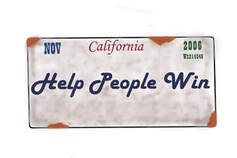 This is the 4th email and 3rd checkpoint in our 1/1/2022 Victim or Victor Series. Staring at the final 45 days of 2020 and with a national election behind us we imagine you might have a few of your team members remarking how much they are looking forward to being done with 2020. Sadly, as a leader you know all too well that Monday January 4th will present just as many challenges and opportunities as the previous Monday. Setting your team’s sights further out appears to be prudent and we have compiled a few best practices for your ready reference. Be wary of vaccine watching. We hear lots of chatter about COVID vaccines and will rejoice when the right solution is presented at scale, but we don’t think you want your people to be the worldwide experts in that narrative as it can be tremendously distracting and demoralizing. Admiral Stockdale whose 7 years as a POW in North Vietnam make him a good primary source on endurance commented that the people who suffered the most were those who set arbitrary dates on when they would be released. When the interviewer asked who didn't make it out of Vietnam, Stockdale replied: “Oh, that's easy, the optimists. Oh, they were the ones who said, 'We're going to be out by Christmas.' And Christmas would come, and Christmas would go. Then they'd say, 'We're going to be out by Easter.' And Easter would come, and Easter would go. And then Thanksgiving, and then it would be Christmas again. And they died of a broken heart.” Stockdale then added: “This is a very important lesson. You must never confuse faith that you will prevail in the end—which you can never afford to lose—with the discipline to confront the most brutal facts of your current reality, whatever they might be.” Keep the daily routines and the key actions in place Amidst the consistent noise of rising COVID cases and the concern over pending government actions it may be wise to take a page from Earnest Shackleton’s book when he was stuck on the south pole in the middle of winter. Their multi-year struggle with the elements included strict daily routines and even time out for the men to kick a soccer ball around. When you are asking your team to hang in there every week, it can get old, consider keeping the cadence of meetings at the appropriate level and focus on the key actions that matter. Thinking back to the soccer example, we find it amazing that after trying to use a hand saw to break ice away from a ship that they had the energy to do anything, but the men trusted Shackleton and he trusted the power of keeping a cadence of action. Having the courage to celebrate. This may seem crazy, but we think the curious leader will find a way to help the team have the courage to celebrate the year. Turning this scrooge of a virus on its head and leveraging that for the first time in a century we are all have a common foe reminds of the Who’s in Whoville singing around the beleaguered Christmas tree in “How the Grinch Stole Christmas” by Dr. Seuss. Having the courage and curiosity to celebrate with your team could play a vital role in how the first quarter of 2021 goes for your team.
How you answer these questions could make the difference in having a team that resents everything it sees in the world or one that is buoyed by what they are overcoming and empowered by the resilient spirit that this period of their lives is helping them build. The Who’s gathered hand in hand and sang, and while we know we won’t be holding hands and probably not be singing, we sure hope you find a way to celebrate. We celebrate the opportunity to share our insights with you and are thankful for your readership and friendship. Drew and Sara This is the third email and second checkpoint in our 1/1/2022 Victim or Victor Series.
A quick disclosure on the title. Early in the pandemic a friend mentioned the phrase "Victim or Victor" off hand in a conversation and it seemed appropriate, not in a dominance sort of way, but as a mental puzzle. Kind of like we all get to choose our mindset in every situation and the hope is that you will see the good and work towards the victory. That friend just lost his wine crop for the year in the recent fires and we are crushed for him. 2020 has been a year of so much loss and required so many people to work so hard to keep things going that it is humbling to even have the audacity to write and expect anyone to have the time to read our prose. We write to share what we are learning to encourage others and as a form of self therapy to look for the good amidst the clouds and for us in Northern California the seemingly endless smoke. Thank you for your friendship and readership. Drew & Sara ------------------------------------------------------------------------- Uncertainty reigns right now. (Don't forget to still Plan)
Meaningful Shared Experiences are being created every week in 2020 (this bodes well for the future)
Checking in with people in the next 45 days before the holiday rush might be a good idea.
In closing if you want to help out our friend who lost his crop you can sign up for their periodic offerings and wine sales here. 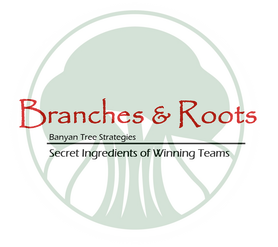 45 days ago we shared our vision that navigating your personal, family, and work lives in this pandemic period could benefit from having a NorthStar heading of 1/1/2022. Where do you want to be on that day and what do you want your world to look like? This is our first checkpoint follow up with a few things we have noticed, and some questions we have been asked. These are bulleted below for your ready reference. ------------------------------------------------------------------------------------------- What we have noticed:
That is what we noticed, what about you? 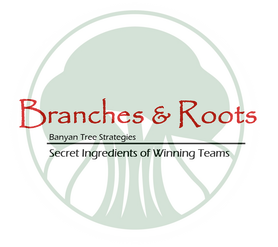 This is a series of articles from emails that we were sending out to clients and friends as the CV Crisis evolves. Hope it is helpful for others and also provides a historical context as we all reacted and learned about the seriousness of this virus. June was another month of adapting and learning how to decipher the signal from the wall of noise that was building. Now that we are past the midpoint of 2020 it seems natural to focus on where we should be by year's end, yet somehow it feels like we need to go further out. My question for you to ponder is this: Where do you want to be 1/1/2022?
In your planning consider thinking through what you can control and what you can not. Do your best to not waste energy or time on things you can't control, like whether we will have college sports on TV. You can't control if online school means you have children at home, but you shouldn't be surprised by it, allocate time to having a plan to help your kids thrive. It is very easy to envision the Covid Crisis costing the world billions and 2 years of disruption. What is also easy to envision is that the victors will say this period was where they honed their vision and adapted to become their best self and team. You won't hear much about these people on the news, the media will focus on the victims. As a leader of yourself and others, the choice is yours, Victim, or Victor. Let me know if you need any help setting up a 18 month plan, the first checkpoint is August 15th. Onward, Drew p.s. Way back in March we wrote about "Endurance" and as we start our journey to 1/1/2022 it appears Admiral Jim Stockdale's words are more helpful than ever: https://www.linkedin.com/pulse/cv-crisis-chronicle-march-29-implementing-principles-drew-sanders/
 One of the first things that can come to mind when making a plan is how long things are going to be this way. How long are you asking people to make sacrifices, how long until we get back to normal? How long is basically another way of asking WHEN? Getting things wrong by predicting a quick turn around on the when and how fronts seems to undermine your leadership in your own mind. In addition, many leaders don’t want to be wrong with too dire a prediction. We get caught in thinking that our adult employees are like a young child, and that we can’t scare them with the real information. Right now, all leaders are caught in the WHEN trap and this is why we think you should punt on the timelines but still have a PLAN. A great way to do this is to get the team focused on the daily key actions that lead to the long-term benefits of endurance as a competitive advantage. If your wondering what we know about endurance, we have unknowingly been acquiring some personal knowledge for decades and had a crash course the last 10 years due to some unforeseen medical emergencies. Our professional golf backgrounds highly correlate with endurance. I also have completed open water swims in Lake Tahoe and the Maui Channel where the duration of the competition is such that endurance, as a quality for continuing for a long time, is paramount. Our crash course has been on the medical front where within an 18-month period Sara was diagnosed with a bi-cuspid aortic heart valve that would require open heart surgery and both of Sara’s parents would be diagnosed with incurable cancers. The prescription you get with a bicuspid valve when you are in your late 30’s is to be as healthy as you can but to wait for as long as you can because post-surgery you may be on blood thinners for the rest of your life and a second surgery may not be possible. Sara’s parents were immediately put into surgery and then aggressive chemotherapy. Random numbers on charts become the norm, Google searches not very comforting, and seldom found is a doctor who got a minor in empathy. What happens when so many family members are in need of care is that you start to shorten up the time frames by which you plan. You go from thinking where your life might be in ten years to realizing that every 90 days or less you are going to be making new plans. You also start to understand that the PLAN now gets an asterisk next to it. The asterisk is then explained at the bottom of the page and it reads: “Plans subject to change.” Endurance, and the benefits of having a recipe for endurance (back to the definition at the top of the quality of continuing for a long time) started to become our constant companions. We also learned to be very aware of a mindset that can appear when the duration of a condition is considered to be unknown. That mindset is COPE. For the purposes of this nonscientific publication we are going to consider COPE to be something to avoid. “When you COPE you lose hope” is one of our taglines. This is not to paint coping as the enemy in all settings, in some rooms it is vital. However, for the purposes of this situation and the leadership challenge that is in front of us know, we are going to want to avoid allowing the team to get comfortable with COPING. We are prescribing the positive principles of Endurance with the aim that you will be able to use these to lead your team at time when you can’t give them an answer to when things will get back to normal. We will share a story from history of endurance and then offer some key lessons learned from that story. The stories can serve as inspiration to your team and then you will be equipped to share why your team will endure and then can use the questions we have provided to help the team navigate the upcoming week. 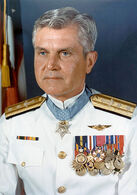 Endurance and the Stockdale Paradox James Stockdale was a POW for seven years in Vietnam with a significant amount of that time being in horrific and solitary confinement at the infamous Hanoi Hilton. In an interview he gave for Jim Collins bestselling book “Good to Great” he shared the dual mentality they formed to allow them to endure their situation and the indeterminate period that they were to be held captive. Here is a snippet from the book and the interview between Jim Collins and James Stockdale. “I never lost faith in the end of the story, I never doubted not only that I would get out, but also that I would prevail in the end and turn the experience into the defining event of my life, which, in retrospect, I would not trade.” When Collins asked who didn't make it out of Vietnam, Stockdale replied: “Oh, that's easy, the optimists. Oh, they were the ones who said, 'We're going to be out by Christmas.' And Christmas would come, and Christmas would go. Then they'd say, 'We're going to be out by Easter.' And Easter would come, and Easter would go. And then Thanksgiving, and then it would be Christmas again. And they died of a broken heart.” Stockdale then added: “This is a very important lesson. You must never confuse faith that you will prevail in the end—which you can never afford to lose—with the discipline to confront the most brutal facts of your current reality, whatever they might be.” Witnessing this philosophy of duality, Collins went on to describe it as the Stockdale Paradox. What a great line. “Confront the most brutal facts of your current reality.” What are the brutal facts of today as you see them? Could we see the basic confidence in the public stock markets shrink to historic lows? Do you have a plan in place to function as a business with the market at those levels? Do you have a plan for a key sales manager or a front-line manager to be sick and not able to work from home? It appears that this is a time for leaders to pull the team together and visit some emergency preparedness plans with more clarity and focus. Have a plan for things getting worse from here so that if that happens the team has practiced recently, and they will know that someone was thinking through this before and not just making it up as they go along. It is also a time to avail the unwanted fears of your clients and share with them what you are doing to serve their needs and the processes you have in place to keep them properly allocated. Your business will endure with certain habits and it is important to have your clients be mentally prepared to endure with you. It seems like if Admiral Stockdale was alive today, he would say:
These points of view give us courage and we hope that by passing this example of endurance on to you that you will be able to effectively lead your employees and advise your clients at this crucial time in our country’s history. We view your work as being essential to our country’s well-being. Thank you, Drew Your Leader Playbook for the Week
Here is your leader playbook for the week:
|
Archives
November 2023
Categories
All
Complete Annual Newsletter Volumes
|
